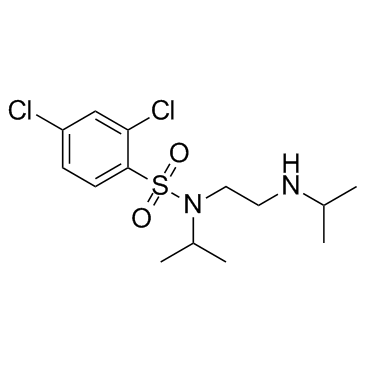| References: |
RN-1734 is a transient receptor potential vanilloid 4 (TRPV4) antagonist, blocking calcium influx induced by the TRPV4 agonist 4α-phorbol 12,13-didecanoate with IC50 values of 2.3, 5.9, and 3.2 µM for human, mouse, and rat TRPV4, respectively.It is selective for TRPV4 over TRPV1, TRPV3, and TRPM8 (IC50s = >100, >30, and >30 µM, respectively). RN-1734 (10 µM) reduces GSK1016790A-induced increases in glycine-activated current (IGly) from 34.5 to 0.97% in mouse hippocampal neurons in vitro.It blocks arteriolar dilation induced by GSK1016790A and increases myogenic tone in rat cremaster arterioles ex vivo when used at a concentration of 30 µM.RN-1734 (1 mg/kg, i.p.) reduces edema and MAPK signaling induced by traumatic brain injury in rats.It also inhibits breakdown of the blood-retinal barrier in streptozotocin-induced diabetic rats when administered at a dose of 100 µM. |























